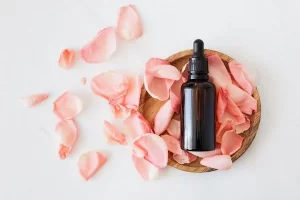In the hustle and bustle of modern life, many individuals turn to various forms of escapism to momentarily disconnect from the stresses and challenges they face daily. One prominent avenue for this temporary respite is through the act of shopping. Beyond the transaction of goods and services, shopping has evolved into a therapeutic experience, offering a gateway to temporary escapes for those seeking solace and distraction from the demands of reality.
- Retail Therapy: A Psychological Refuge:
The term “retail therapy” has become a colloquial way of describing the phenomenon where individuals engage in shopping as a means of alleviating stress or improving their mood. Psychologically, the act of shopping triggers the release of dopamine, the brain’s feel-good neurotransmitter. This chemical response can create a sense of pleasure and satisfaction, providing a temporary escape from emotional discomfort.
- Creating a Personalized Oasis:
Shopping allows individuals to curate their surroundings and appearance, creating a sense of control and personalization in their lives. Whether it’s updating one’s wardrobe, redecorating a living space, or acquiring the latest gadgets, the process of selection and purchase offers a sense of empowerment and escapism. In these moments, individuals can momentarily transcend their everyday realities and immerse themselves in the fantasy of an idealized life.
- Escaping Through Exploration:
Shopping, especially in expansive malls or vibrant shopping districts, provides an opportunity for exploration. The act of moving from store to store, discovering new products, and experiencing different retail environments can create a sense of adventure. This exploration serves as a distraction from daily worries, allowing individuals to immerse themselves in the novelty and excitement of the shopping experience.
- The Social Escape:
Beyond the solitary experience, shopping also offers a social escape for individuals seeking connection and shared experiences. Whether shopping with friends, family, or even engaging in online shopping communities, the act becomes a social activity that fosters a sense of belonging. The shared enjoyment of discovering new items and discussing potential purchases can temporarily divert attention from life’s challenges.
- Instant Gratification and Distraction:
In a world where instant gratification is increasingly sought after, shopping provides a quick and tangible way to experience immediate pleasure. The anticipation of a purchase, the excitement of finding a desired item, and the act of acquiring it offer a brief yet powerful distraction. This instant gratification becomes a momentary escape from the complexities and uncertainties of daily life.
- Navigating Emotional Turbulence:
For some, shopping serves as a coping mechanism for emotional turbulence. Whether dealing with stress, anxiety, or sadness, the act of shopping can offer a sense of comfort and control. However, it’s essential to recognize that this coping mechanism may provide only temporary relief, and addressing underlying emotional challenges is crucial for long-term well-being.
Conclusion:
Shopping, once a utilitarian activity, has evolved into a multifaceted experience that extends beyond the mere exchange of goods and services. It has become a dynamic avenue for individuals to seek temporary escapes from the rigors of daily life. While the benefits of retail therapy are evident, it’s essential for individuals to be mindful of their shopping habits and recognize when escapism turns into a problematic coping mechanism. Balancing the pleasures of shopping with a holistic approach to mental well-being ensures that individuals can enjoy the occasional escape without compromising their long-term happiness and fulfillment.
 Besides visual stimulation, shopping can give you another type of escape. With that, go on a hunt for the perfect item, which can make shopping a real adventure. For example, if you are searching for a home décor item, give yourself a challenge to find something unique and inspiring. Remember to look not only for the item that meets your criteria, but consider the feeling or emotion you get when looking at a particular item. This type of shopping can provide another type of satisfaction when you bring home the item that not only meets your needs, but also makes you feel like you’ve accomplished something.
Besides visual stimulation, shopping can give you another type of escape. With that, go on a hunt for the perfect item, which can make shopping a real adventure. For example, if you are searching for a home décor item, give yourself a challenge to find something unique and inspiring. Remember to look not only for the item that meets your criteria, but consider the feeling or emotion you get when looking at a particular item. This type of shopping can provide another type of satisfaction when you bring home the item that not only meets your needs, but also makes you feel like you’ve accomplished something.





